-

Yamaha have released details of their retro-GP styled sportster, paying tribute to their racing heritage with the Grand Prix inspired ‘Legend Red’ colour scheme to brighten up these winter evenings…
Read More
-

It’s mad to think that Yamaha’s nutter 600, the YZF-R6 is knocking on 25 years old. And to celebrate, we’re taking you through every major upgrade it’s had, from the original in 5EB (1999) through to today's BN6 (2017)...
Read More
-

BeMoto Dirt Bike Insurance gets up close with the GSXR powered CR1000 - Possibly the world’s craziest two-stroke custom hill climber built by Team LCH!
Read More
-
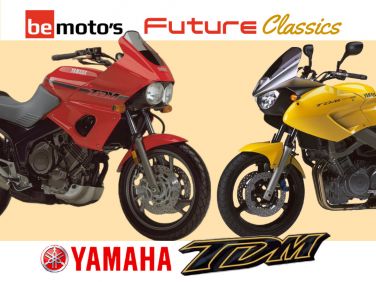
The decathlete of motorcycling didn’t exactly hop, skip and jump out of the showrooms, but there aren’t many do-it-all bikes as good as this (when new). Yamaha were ahead of their time, which is why KTM are copying it now with their new SM T.
Read More
-

What’s in a name? When it comes to ‘R7’, quite a lot, actually. Should Yamaha have dusted off the famous moniker for its new, parallel-twin powered pretender? Well, there’s only one way to find out…
Read More
-

What’s that noise a ring-a-dinging? Not quite a two-stroke but the Ebay notification bell to let us know that time is ticking down on this piece of naughty as new nostalgia. Scottie Redmond explains why he’s watching this LC…
Read More
-

Yamaha DT125Rs were built as proper motorcycles with quality parts and sized for fully grown adults. Easy to work on and parts still easily available, which all adds up to making it an attractive inner city 125 - especially this example that sports an electric start! All you need is some modern road-biased tyres and a bottle of two-stroke oil.
Read More
-

Yamaha didn't wait very long for Valentino Rossi to hang up his racing gloves before dropping this tasty R1 GYTR VR46 Tribute on us.
Read More
-
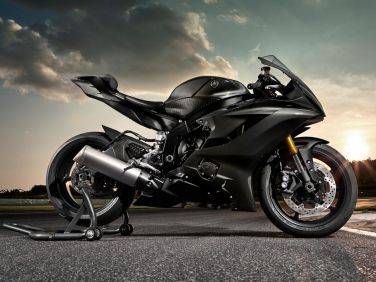
Yamaha R6: Two new track only bikes for 2022. R6 Race and R6 GYTR introduced
Read More
-

BeMoto customer Richy Vida, of of Youtube fame, is half biker, half musician and all round nice guy... We hear about his adventures and find out more about his multi bike collection right here...
Read More
-

The Ducati 749 Series is a triple threat of unique, powerful and refined machines. We visit each model and focus on the extremely rare 749R that still holds its original RRP!
Read More
-

Back in 1999, Suzuki’s Hayabusa launched into a world of high-speed behemoths like the Super Blackbird and the ZZ-R1100. Sports bikes ruled and 173bhp seemed like more power than any human could handle. But a lot’s gone on in 22 years since...
Read More
-

Time flies when you’re having fun on 1,000cc sportsbikes. Even so, it’s hard to believe the GSX-R1000 is twenty years old this year. Yep, it’s two decades since Suzuki finally gave its legendary GSX-R750 superbike the capacity boost it deserved...
Read More
-

Originally a concept in 2000, the Suzuki B-King finally came to market in 2007. The financial crisis of 2008 stunted the growth of this super streetfighter which powered by the engine of a Hayabusa. Nonetheless, we think the super powerful naked bike had all the hallmarks of something special...
Read More
-

Manufactured between 2000 and 2006 the Kawasaki ZX-12R Ninja was the most powerful production motorcycle. It was specifically built to rival the Suzuki Hayabusa. Overtaken by the ZX-14, this stunning beast is one of our prime contenders for a future classic. Find out why...
Read More
-
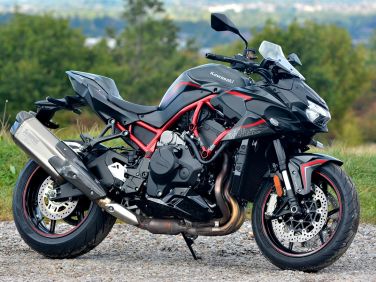
Seven years on from the game changing Ninja H2, the only other charged bikes we’ve had are the H2 SX supertourer – a great bike, but few obvious benefits over the ZZR1400 it replaced – and now, the Z H2 supernaked, with a 197bhp variant of the supercharged motor and a radical insectoid styling package. Alan Dowds take one for a spin...
Read More
-

Most of us know what a pain it is to get a puncture – the time, the agony, the expense. Well what if you could dramatically reduce the risk of a flat? Bike-Seal is a simple solution but with an impressive technical C.V.
Read More
-

The Suzuki Katana is an iconic motorcycle that has been at the epicentre of the motorcycle world since the 1980's. Designed in 1979, then sold between 1981 and 2006 it belonged to many an enthusiast before being put to bed and reincarnated in 2019. This is the 2020 model and you can find out more here...
Read More
-
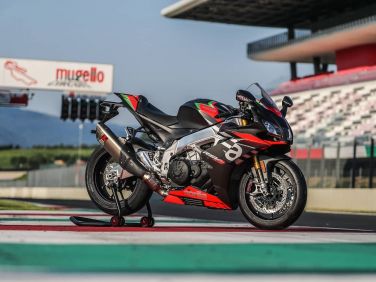
The Aprilia RSV4 1100 Factory is no doubt at the top of its game when it comes to the premier superbikes in the market. Alan Dowds gets a day on track to see if he is able to tame this beast with the new bells and whistles for 2020. The outcome? You'll have to read more...
Read More
-

Looking for a big bore on a budget? Looking for some adventure without the premium price tag? Alan Dowds takes the 202 Suzuki V-Strom 1050 XT for a spin and the results are surprising...
Read More
-

Looking for a bike that is handsome, half-faired, sort-of-adventure-lite styling? Something solid with the build quality, technology and gadgetry that no-one does better than BMW?? This could well be the commuter motorbike for you...
Read More
-

Your average 450 four-stroke will kick out a little over 50BHP, this whopping machine will churn out 149BHP with a 0-60 time of 2.5 seconds. There was us, this bike, and a disused runway… Read what happened next!
Read More
-

In Part Two of our look at motorcycle engines Alan Dowds takes a look at the big, serious world of multi-cylinder lumps, from four up to eight. Of these engines we again look at which of them are awesome, and which run like a bag of spanners!
Read More
-

Now over 20 years old, this beauty is officially a Classic… Designed to compete in the Superbike World Championships and 8 hour endurance races, we let Kar Lee loose at Rockingham Circuit to blow some cobwebs off our R7…
Read More
-

Kawasaki’s Z900 RS Cafe is a good-looking retro roadster. But the crazy guys at Big CC Racing have given their Zed an extra 100bhp – doubling its output with a neat turbocharger install. At BeMoto we got our hands on it and had a decent bit of fun!
Read More
-

There are a few names which have carved out a proper niche in the bike world. Kawasaki’s Ninja, Honda’s Fireblade, BMW’s GS – they’ve all become legendary marques, standing for top performance in their respective areas. Yamaha’s Ténéré is another one of these renowned monikers.
Read More
-

Lamb Chop Rides is interviewed about his "BEASTIE". We find out about this very special RCV Fireblade was brought to life and more importantly how she rides as our very own Kar Lee has some performance playtime. READ MORE...
Read More
-
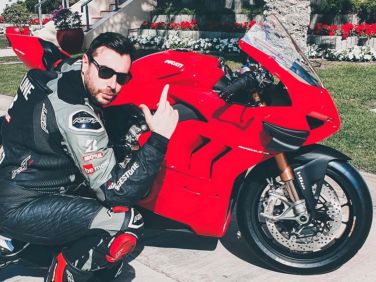
BeMoto customer Chris Eades, of 44Teeth or Baron von Grumble as you most likely know him, gets to ride every bike you could ever dream of! But what does he own in his collection? Find out here...
Read More
-

Do you feel the need for speed? In December 2019 Kawasaki's YouTube channel fueled rumours of a possible return of the iconic GPZ900R. If you’re wondering what it might possibly look like, wonder no more as we’ve taken a best guess with our digital rendering...
Read More
-

Alan 'Dowdsy' Dowds has been a bike journalist for 25 years, he gets to borrow the latest and greatest bikes from all the big manufacturers, but what bikes does he actually own in his multi-bike garage...
Read More
-

In 2020 we’ve got supercharged engines, electric suspension, wheelie control, carbon wheels, aerodynamic wings and 220bhp litre-class road bikes! But if you’d showed me that list 20 years ago, I’d have been a teeny bit disappointed...
Read More
-

Welding – dull industrial process or pure metal art? We have a look at the tech and science behind properly joining up bits of metal – and see how it’s applied to make an exhaust can for our Yamaha MT-10...
Read More
-
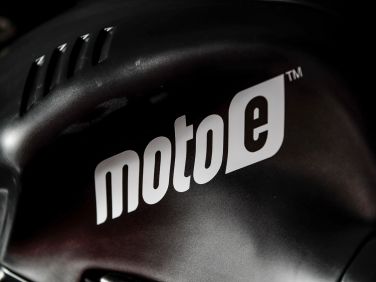
MotoE has just finished its first season of racing as a MotoGP support series. Our man Alan Dowds got a spin on a MotoE Ego Corsa Electric Race Bike at Valencia – here’s what he reckoned…
Read More
-
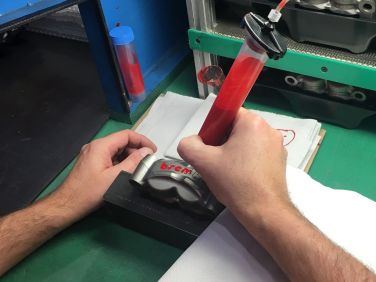
We look at how the best calipers, discs and pads in the business are made. So the next time you haul on the lever to avoid one of those U-turning taxis or steamed-up school-run Range Rovers, be grateful for the good folk who’ve helped you stop in time…
Read More
-

Power is, as they say, nothing without control. And that’s never been more true than nowadays in the litre-class superbike sector, making more than 200bhp. And for 2019, Aprilia’s joined the band with a new RSV4 1100 Factory...
Read More
-

Kawasaki’s pulled out all the stops for its top-spec adventure tourer. The PR blurb speaks of taking on ‘any road’, which is fair enough. But unlike, say, the Africa Twin, or the R1250 GS Adventure, the Versys isn’t really intended for serious off road use...
Read More
-
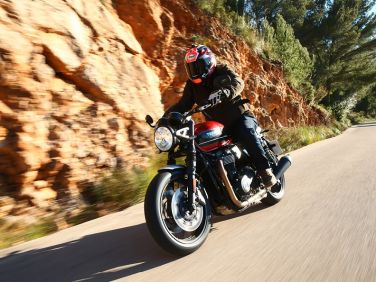
The Triumph modern classic range has been a big success, including the Bonneville, Bobber, Thruxton, Street Twin and Street Scramblers. All offer good looks, sound performance and heritage. And now we’ve got another entry in the class for 2019 – the Speed Twin...
Read More
-

Motocross is without doubt the most easily accessible discipline for someone interest in getting started in motorsport. It can be daunting trying to decide which bike is the best for you - but never fear, here's our 'go-to' list of MX bikes that are perfect for rookies to the sport…
Read More
-

I STILL remember seeing my first Supermoto... It was a Kawasaki KX500. Fast forward 25 years, and here I am, in Gran Canaria, about to ride the latest version of Ducati’s Hypermotard - a thug in gentlemans clothing...
Read More
-
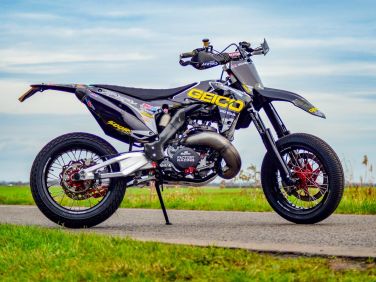
Customer CR500 Supermoto Special. Those two letters and three numbers are enough to scare most riders who have dared to tackle the big-bore, single-cylinder two-dinger. Starting one is difficult, holding one wide-open is insanity...
Read More
-

We love riding (almost!) all bikes, (almost!) all the time. But an artificially-strangled small-bore engine is always going to put a bit of a dampener on proceedings. Would that be the case with this new 2019 Yamaha YZF-R125?
Read More
-

The Daytona 675R shuffled off last year, leaving a big flagship-shaped hole in Triumph's range. And here, arguably, is what fills that gap. The new Tiger 1200 is the priciest, most powerful, most high-tech Triumph and it's had a radical makeover...
Read More
-
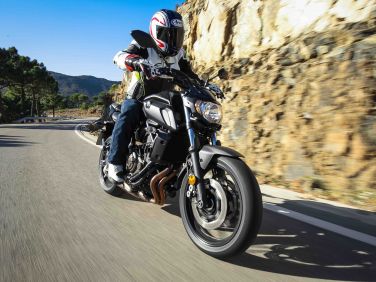
Launched four years ago on the crest of Yamaha's new wave of sweet roadsters, the MT-07 was, on the face of it, a middle-of-the-road budget naked, with decent specs on paper and attractive styling. The script has turned out slightly different though...
Read More
-

Ducati's done exactly what they said they wanted to do – make a big four that feels like a twin low-down, yet also batters you to hell with its screaming top end rush and power delivery more akin to a turbo bike than anything normally aspirated…
Read More
-

Exclusive video from the 2017 EICMA show in Milan - Close up video of the all new 2018 Ducati Panigale V4 Speciale including naked frame and internals behind the fairings and digital dashboard.
Read More
-

In April 2016 we imagined what a street H2R could look like. The response was incredible and the feedback unanimous... "Get rid of that ugly exhaust"! Well we listened and new for 2017, this virtual supercharged H2 CGI gets a Kardesign update...
Read More
-
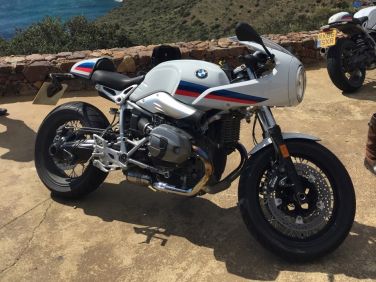
With its ice-white paint, BMW Motorsport coachlines and retro-race style, the RnineT really caught the imagination of UK bikers. Under that beautiful exterior though, the Racer is also a bit of a beast...
Read More
-

Remember the 'streetfighter' craze of the late 1980s? Fast forward 30 years, and the 'streetfighter' is an established factory class, the supernaked. BMW's version, the S1000R, is firmly in the crackers category...
Read More
-
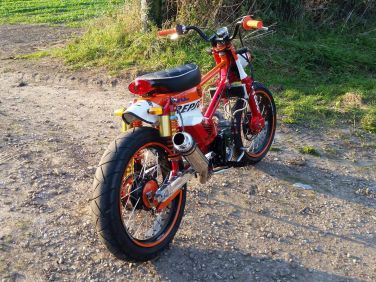
This in our opinion, is one of the best (not to mention one of the most unique) examples of a custom Honda Cub that we have come across. Even better for Repsol Honda fans, check this out...
Read More
-

When I was a kid, 'Buy British' was a genuine thing. And with the pound in the shitter, maybe we'll all be shopping for stuff with Union Flags on the labels again soon. Buying British has been a decent option for a long time now, but in this naked middleweight sector, it could well be the best option of all…
Read More
-

Honda's hitting back in the litre superbike class, with a brand-new Fireblade for 2017. Honda launched the bike at the Portimao circuit in Portugal last week and our man Alan Dowds was there – here's what he thinks to the new bike…
Read More
-

Sitting neatly between the racetrack refugee and the more spacious road-friendly original, our R1 features all the technological treats of the latest bike but re-packages them in a chassis that works on the road too...
Read More
-

Featured in Australian Motorcycle News, this Yamaha 'R5' was created by Robert Hook in his Melbourne garage, a large scale model sculptor, ex-racer and motorcycle engineering genius, with a spare RZ500 engine and a YZF-R6 frame...
Read More
-

It’s being reported online that Honda could be looking to offer up another V4-flavoured superbike option by 2018 to mark the firm’s 70th anniversary. Patents filed by Honda late last year suggest a more budget-orientated version of the £138,000 road-going racebike may be on the cards...
Read More
-

The R6 has been immensely successful for Yamaha as a highly capable road bike, and for many, it's unrivalled as a Supersport & Superstock race bike. Available in April 2017, the new 2017 YZF-R6 brings the model bang up-to-date with styling based on the current R1...
Read More
-
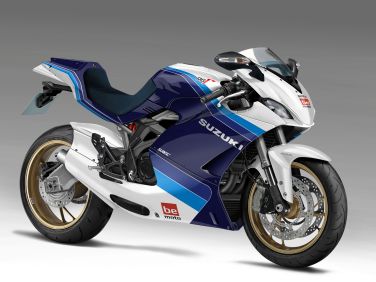
The early to mid 80s was a wonderful period for medium-bore stroker fans. The Suzuki RG250 Gamma was at one time the most advanced production bike on the planet... In Bemoto’s parallel world, Suzuki’s RG250 Gamma lives on!
Read More
-

Yamaha has been setting a new standard with the MT series over recent years and now they have a new flagship model.. The shit-hot (many say butt-ugly) hyper-naked MT-10. One of the BeMoto team borrowed one for a test ride, here's what they had to say about it...
Read More
-

Our minds were blown when we came across Gary Parker's Suzuki RGV500 special at the MCN Festival. The show featured a huge array of amazing machinery - the classics, the bikes ridden by the legends, the 2-strokes, the latest and greatest. However one bike really stood out...
Read More
-

Suzuki revealed their much-anticipated update to the GSX-R1000 last year in the form of a ‘concept’ and although we love it, we suspect that in a parallel world there’s already an edgier, more MotoGP version in existence…
Read More
-

The original BMW R5 was one of the influential 'sports' motorbikes of the late 1930s and to mark its 80th anniversary BMW Motorrad teamed-up with custom bike builders Ronny and Benny Noren to produce the R5 'Hommage'...
Read More
-

Turkish custom bike builders ‘Bunker Customs’, based in Istanbul and run by brothers Can and Mert Uzer have created something eye catching and practical with this 80’s tracker style XSR700...
Read More
-

There’s a new Fireblade coming. Will it look anything like our exclusive CGI? Fingers crossed for a single-sided swingarm, sleek RC8-esque faired-in exhaust system and some drilled holes for old times’ sake...
Read More
-

Harley loves head… Flathead, Panhead, Knucklehead, Shovelhead, Fathead, Blockhead… You get the gist. And then there’s the Glides… Endlessly customizable (US English) and capable of consuming all of your spare time and money...
Read More
-

The mercury's finally crept out of the little bulb at the bottom of the themometer and the price of a trackday at Brands Hatch has risen above £80 for the first time in six months. Yes! It's almost the start of the riding season...
Read More
-

Every few years, there has to be some new bike tech for us to get excited about. It's been the same since forever. Some of these leaps forward are genuinely great, and have changed biking. Some – not so much. So what category are gas forks in?
Read More
-

Over the years there have been a number of engine configurations of 250cc to 500cc sportsbikes, powered by both two-stroke and four-stroke engines. The two-stroke 250cc Sportbikes were always powered by twin cylinder engines and all four-stroke incarnations were originally in-line 4 cylinder screamers...
Read More
-

The 750cc Sportsbike can be traced back to 1969 when Honda introduced the CB750; it was a revolution, featuring an in-line four-cylinder four-stroke engine producing a claimed 67bhp and capable of hitting a top speed of around 120mph...
Read More
-
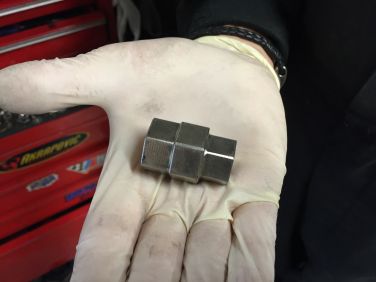
In our dreams our garages are full-on WSB-spec palaces, with wall-to-wall Snap-On tools, and all the Motul products we can eat. But like most folk, we have a selection of 'must-have' little helper tools. Usually nothing fancy, but they get us out of a hole on a regular basis...
Read More
-

With stints on MCN, RiDE and over a decade on Superbike magazine as the deputy editor, Dowdsy has been a freelance bike journalist for the last six years...
Read More
-
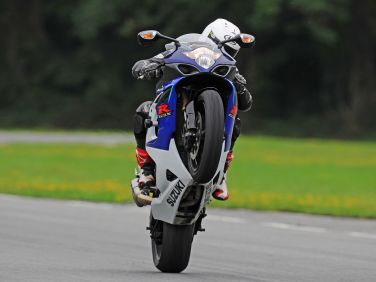
Yeah, yeah, we know what the grown-ups say. Wheelies: they're not big and they're not clever. Anyway. Done properly (on a closed road or track naturally), wheelies are a very fine test of a bike's performance...
Read More
-

If we're getting a supercharged Kawasaki H2R Supersports bike, let's imagine what a street version could look like too. Originally created for Rapid Bikes magazine, this virtual supercharged H2 CGI gets a BeMoto update...
Read More
-

Putting together a magazine group test can be a hilarious minefield, especially if it involves taking a load of bikes abroad…
Read More
-
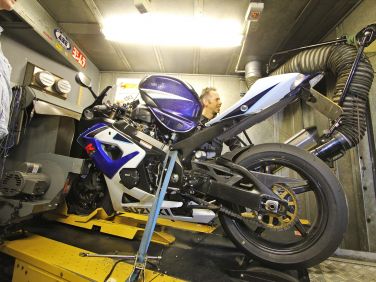
Modifying the fuelling on engines is an essential part of any tuning process. The traditional way has been to use an aftermarket fuel injection computer, like the Dynojet Power Commander, but ECU flashing is the latest in fuel-injection tuning, and they've been doing it with cars for years. But what is it and how does it work?
Read More
-
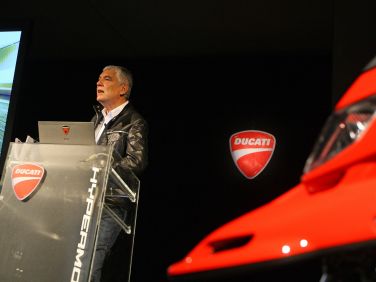
Congratulations! You're the millionth customer at the local multi-franchise mega-bike-dealer! And so you've picked up a very special prize! Yep, you're going on an actual bike press launch. Wooh! So what can you expect?
Read More
-

I remember when I first rode one of these – it was back in 1997, it had a set of cheap, loud cans on it, and it went like hell. A hundred and seventy appeared on the clocks in no time, totally belying the rather unassuming appearance of the little Honda...
Read More
-

Back in the 90s and 00s, it wasn't unusual to see motors being updated every couple of years. So it's a sign of just how good Yamaha made the original FJ1100 motor back in 1984, that it's still going strong today, in the naked XJR1300. That's more than 32 years with essentially the same layout...
Read More
-

The 1990s was a cracking decade for superbikes. We got Ducati's 916, Honda's FireBlade and NR750, Suzuki's GSX-R750 and Hayabusa, and Yamaha's R1 and R6. Stonking sportsbikes all! But we also got some classic metal in the lower classes too...
Read More
-

Despite a relatively short-lived four year production run the Suzuki Katana had well and truly left its mark (the styling cues can still be seen on some of today’s line-up) and has even been resurrected many times in limited numbers. We think that somewhere out there, Suzuki are still building them and they might just look like this...
Read More
-

While it's not going to be troubling Honda or Yamaha anytime soon, the Varese firm is looking to extend its proposition out and up from the 'Italian hyper-exotica' ghetto with this Brutal 800...
Read More
-

The original Scrambler, launched in late 2014, was a middleweight 803cc roadster, with a basic chassis and moderate engine performance, plus a huge truckload of accessories, merchandise and annoyingly-upbeat advertising campaigns...
Read More
-

It looked like nothing less than a road-legal 250GP machine, with upside-down forks, enormous gull-arm swingarm, huge expansion chambers and dual-stinger silencers. A full fairing yelled out the Suzuki engineers' plan – "Made with the Grand Prix spirit", no less...
Read More
-

In a market dominated by the four-stroke motor, it’s easy to forget that big strokers once roamed the roads, leaving beautiful plumes of smoke in their wake. Originally created for Performance Bikes magazine, this virtual RD500 CGI gets a BeMoto update for 2016...
Read More
-

Torakusu Yamaha, was born in 1851 in Nagasaki, Japan. Having studied engineering, he eventually turned his skills to making musical instruments. This required many hours of fine-tuning, hence the three tuning forks in the Yamaha logo...
Read More





![]()
